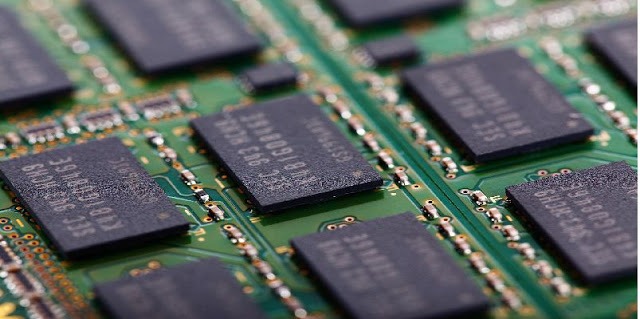Without a doubt, one of the more common technology questions we get asked about surround those data storage metrics, like terabytes, gigabytes, petabytes, megabytes, etc.
You’ve probably heard most of the terms before, but do you know what they mean? How many gigabytes are in a terabyte? What does one terabyte actually mean in the real world? These are all things you need to know before you buy a hard drive or memory card, choose a tablet based on the memory it has, etc.
Fortunately, as confusing as it all might all seem at first glance, all of these units of measurement are easily convertible from one to another, and are simple concepts to grasp thanks to the examples we’ve provided below.
Let’s start with the basics.
Terabytes, Gigabytes, and Petabytes: Which is Bigger?
Right away, knowing which is bigger and which is smaller, as well as the abbreviations that represent these numbers, is probably the most helpful thing to get down.
All of these computer technology storage units of measurement are based on the byte, which the amount of storage required to store a single character of text:
-
- An exabyte (EB) is larger than a…
-
- petabyte (PB), which is larger than a…
-
- terabyte (TB), which is larger than a…
-
- gigabyte (GB), which is larger than a…
-
- megabyte (MB), which is larger than a…
-
- kilobyte (KB), which is larger than a…
- byte (B)
Less helpful in the real world is the smaller bit (there are 8 bits in 1 byte) and the larger zettabyte and yottabyte, among some others.
We won’t be sticking yottabyte size memory cards in our cameras anytime soon so consider those some impressive words to throw around at your next party.
To convert from one unit to another, just know that for every level you go up, you multiply by 1,024. Don’t worry if that’s confusing – you’ll see enough examples below that you’ll have the math down in no time.
The table at the bottom of this article is helpful too.
Note: You’ll see many sources online say that each new level is 1,000 times greater than the smaller, not 1,024. While true in some cases, in practical terms, considering how computers use storage devices, 1,024 is the more realistic multiplier to do your calculations with.
Now on the most practical stuff…
How Many Gigabytes (GB) in a Terabyte (TB)?
There are 1,024 GB in 1 TB.
1 TB = 1,024 GB = 1,048,576 MB = 1,073,741,824 KB = 1,099,511,627,776 B.
Put another way…
A TB is 1,024 times bigger than a GB. To convert TB to GB, just take the TB number and multiply by 1,024 to get the number of GBs. To convert GB to TB, just take the GB number and divide by 1,024.
How Many Megabytes (MB) in a Gigabyte (GB)?
There are 1,024 MB in 1 GB
1 GB = 1,024 MB = 1,048,576 KB = 1,073,741,824 B.
Like in the previous example, a GB is 1,024 times bigger than a MB. To convert GB to MB, take the GB number and multiply by 1,024 to get the number of MBs. To convert MB to GB, take the MB number and divide it by 1,024.
How Big is a Terabyte?
The terabyte (TB) is the most common unit used to measure hard drive size and a number you might actually run into from time to time.
A single TB is a lot of space. It’s would take 728,177 floppy disks or 1,498 CD-ROM discs to store just 1 TB worth of information.
-
- As of 2017, most new, average priced computer hard drives were in the 1 to 3 TB range.
-
- Many ISPs cap monthly data usage at 1 TB.
-
- The Hubble Space Telescope generates about 10 TB of new data every year.
-
- Around 130,000 digital photos would require 1 TB of space… close to 400 photos every day for a year!
- IBM’s famous Watson game-playing supercomputer has 16 TB of RAM.
As you saw in the GB to TB math above, 1 TB is equal to a bit more than one trillion bytes.
How Big is a Petabyte?
The petabyte (PB) is just a crazy large chunk of data but it actually comes up more and more these days.
To store a single PB would take over 745 million floppy disks or 1.5 million CD-ROM discs, clearly not an efficient way to collect a petabyte of information, but it’s fun to think about!
-
- The movie Avatar needed about 1 PB of storage to render those graphics.
-
- It’s estimated that the human brain can store around 2.5 PB of memory data.
-
- Over 3.4 years of 24/7 Full HD video recording would be around 1 PB in size.
-
- As of late 2016, the Wayback Machine was storing 15 PB of data!
- 1 PB is equivalent to over 4,000 digital photos per day, over your entire life.
A single PB is 1,024 TB… you know, that number we already established was enormous even at one! In yet a more impressive view, 1 PB is equal to over 1 quadrillion bytes!
How Big is an Exabyte?
Talking about even a single EB seems a bit crazy but there are situations where the world really does run into this level of data.
Yes, it’s comical, but heading back to the previous comparisons: to get to just a single EB would take 763 billion floppy disks or 1.5 billion CD-ROM discs. Can you imagine?
Some more mind-bending thoughts around exabytes:
-
- Way back in 2010, the internet was already handling 21 EB per month.
-
- Almost 11 million movies in 4K format would fit comfortably inside a 1 EB storage device.
-
- A single EB could hold the entire Library of Congress 3,000 times over.
- A gram of DNA can hold 490 EB, at least in theory. Let that sink in for a minute.
Now for the math: a single EB holds 1,024 PB or 1,048,576 TB. That’s over 1 quintillion bytes! We had to look up quintillion – yes, it’s a number!
How Big is a Gigabyte?
Talking about the GB is a bit more commonplace – we see GBs everywhere, from memory cards, to movie downloads, smartphone data plans, and more.
A single GB is equivalent to a little over 700 floppy disks or just over a single CD.
A GB is not a small number by any means, but these days it’s a level of data we use up quickly, sometimes several times over each day. It’s a number we very much run up against on a regular basis.
-
- 1 GB can store almost 300 songs in MP3 format.
-
- A single HD Netflix movie might gobble up over 4 GB as you watch. A 4K version might run over 20 GB!
-
- A DVD movie disc holds about 9.4 GB.
-
- Most smartphones store 64 GB or 128 GB of data (your apps, music downloads, etc.).
- Your smartphone data plan, which you use when you’re away from your wireless network at home, might be capped at 5 GB, 10 GB, or a bit more per month.
Like we showed in the MB to GB conversion a few sections above, 1 GB is the same as over one billion bytes. That’s no small number, but it’s not nearly an impressive of an amount as it once was.
The Byte Table
Here it all is together, which helps to illustrate just how big some of those big numbers get!
| Metric | Value | Bytes |
|---|---|---|
| Byte (B) | 1 | 1 |
| Kilobyte (KB) | 1,0241 | 1,024 |
| Megabyte (MB) | 1,0242 | 1,048,576 |
| Gigabyte (GB) | 1,0243 | 1,073,741,824 |
| Terabyte (TB) | 1,0244 | 1,099,511,627,776 |
| Petabyte (PB) | 1,0245 | 1,125,899,906,842,624 |
| Exabyte (EB) | 1,0246 | 1,152,921,504,606,846,976 |
| Zettabyte (ZB) | 1,0247 | 1,180,591,620,717,411,303,424 |
| Yottabyte (YB) | 1,0248 | 1,208,925,819,614,629,174,706,176 |




